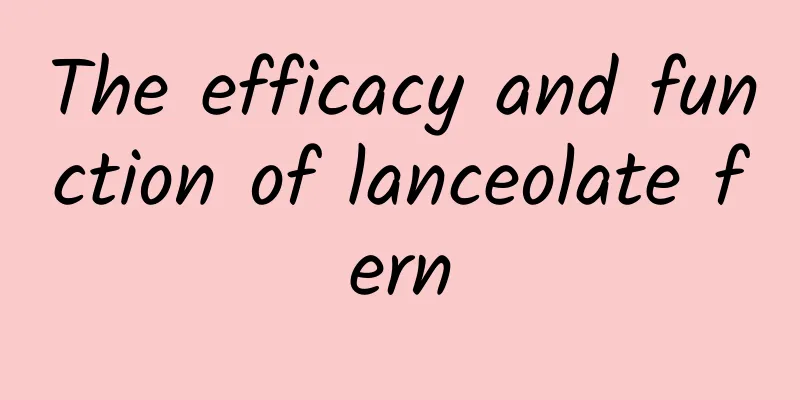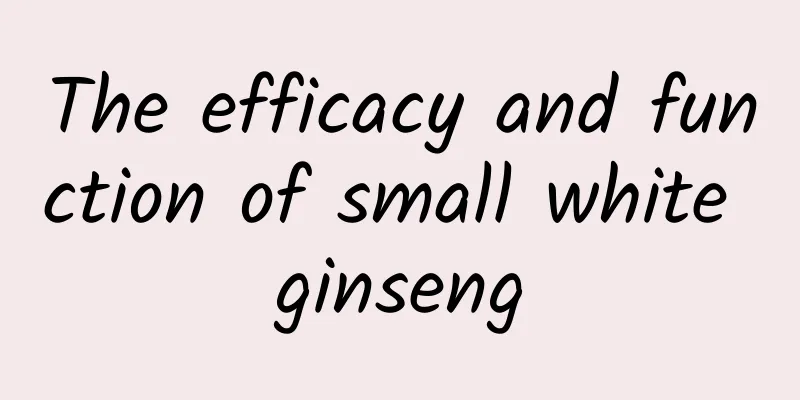The efficacy and function of mountain radish

|
There are many types of Chinese medicine. When we choose, we need to understand the medicine first. So do you know about the medicinal material Shanjiancai? Let us introduce it below. 【English name】 all-grass of Hastate Cacalia [Source] Medicinal material source: the whole herb of the Asteraceae plant. [Original form] The mountain thorn is a perennial herb, 60-150cm high. The stem is thick and the upper part is covered with glandular short hairs. The lower leaves wither during anthesis, the middle leaves are triangular-halberd-shaped, 10-17cm long, 13-19cm wide, truncated or slightly cordate at the base, cuneate-shaped, decurrent or with narrow-winged petioles at the top, 4-5cm long, with irregular sharp teeth on the edges, sparse soft hairs on the upper side and denser hairs on the lower side, the upper leaves gradually become smaller, triangular or often round. There are numerous capitulums, drooping, densely packed into tower-shaped panicles, with peduncles 0.4-2cm long and densely covered with glandular short hairs; the involucre is tubular, 9-12mm long; there are 8 bracts, narrowly oblong or lanceolate, densely covered with glandular short hairs; there are 13-19 flowers, tubular, pale white. Achenes are light yellow-brown with white pappus. [Habitat distribution] Ecological environment: grows in forest edges, thickets or grasslands. 【Properties】 Characteristic identification: The stem is thick and densely covered with glandular short hairs on the upper part. The lower leaves are withered, the upper and middle leaves are triangular-halberd-shaped, the base is truncated or slightly cordate, extending downward into a petiole with narrow wings at the top, the basal leaves do not embrace the stem, and the leaf margins have irregular sharp teeth. The involucre is tubular; the bracts are narrowly oblong or lanceolate, densely covered with glandular short hairs; the flowers are tubular and pale white. Slight odor, light taste. [Chemical composition] The dried whole herb contains hastacine, 1-hydroxymethyl-7-hydroxypyrrolidone, hastanecinic acid[1], cacalolide[2], etc. 【Nature and flavor】 Bitter; Cool 【Functions and indications】Detoxification; diuretic. Mainly caused by suppuration of wounds and difficulty in urination 【Usage and Dosage】 For oral use: appropriate amount, decocted in water for washing; or mash and apply on the affected area. For internal use: decoction, 5-10g. [Discussions by various scholars] "Xinhua Compendium of Materia Medica": The whole plant: has the function of promoting urination. Used for urinary problems. 【Excerpt】 Chinese Materia Medica Through the detailed introduction of the Chinese medicinal herb Shanjiancai in the above article, we know that Shanjiancai has many functions and effects and is extremely beneficial to the body. So if you have related symptoms, you might as well give it a try. |
<<: The efficacy and function of chisel
>>: The efficacy and function of beech
Recommend
The efficacy and function of mushroom
I don’t know if you have seen Junchen in your lif...
The efficacy and function of purple quartz
Amethyst is a very common Chinese medicine in our...
How should wolfberry be consumed?
I believe that most people will not feel unfamili...
What are the effects and functions of sea dragon?
Sea dragon is a common marine animal. It is one o...
What is the recipe for the medicinal wine that nourishes the kidney and strengthens yang?
In our lives, many men always face tremendous wor...
The efficacy and function of red purple beads
The essence of traditional Chinese medicine is to...
The efficacy and function of chrysanthemum leaves
As people's research on traditional Chinese m...
What are the types of Chinese herbal lipid-lowering drugs?
My mother is getting older and fatter. What kinds...
Can Danggui and Shenqi Pills be taken together?
Angelica is a kind of medicinal material in our l...
The efficacy and function of Imperata root
Imperata root has the effects of clearing away he...
What diseases can mulberry leaves cure?
Mulberry leaves can treat diabetes, inhibit the r...
Can you really lose weight by not eating staple foods? You’re overthinking!
Audit expert: Shen Yingjian Director of the Nutri...
The efficacy and function of silkworm cocoon grass
Silkworm cocoon grass is a very common type of tr...
For research purposes, scientists go to fly-infested restaurants to supplement probiotics?
Looking at yourself in the mirror, do you feel lo...









